PROTECT YOUR DNA WITH QUANTUM TECHNOLOGY
Orgo-Life the new way to the future Advertising by AdpathwayGrass that stays green all year, or evergreen grass, is a great way to add and maintain beauty in the landscape year-round. Unlike seasonal grasses, which turn brown in winter, these evergreen varieties maintain their color. They look lush and vibrant throughout all seasons, even during the coldest months.
Adding evergreen grasses to your garden adds structure and texture to anchor the space when most plants die back or go dormant. You can add shades of deep green, silver, and blue to the landscape to make winter feel more lively and colorful.
Beyond their aesthetic appeal, grasses that stay green all year are a practical landscape choice as well. Because they remain active in the winter, they help prevent soil erosion, and their roots support beneficial microbes. They can contribute to a healthy ecosystem by creating shelter for small animals and insects over the winter.
Evergreen grasses provide low-maintenance beauty without the need for replacing every year. Over time, you can divide them for even more plants! Let’s take a look at some reliable and beautiful grasses that stay green all year.
Seed Starting Kit
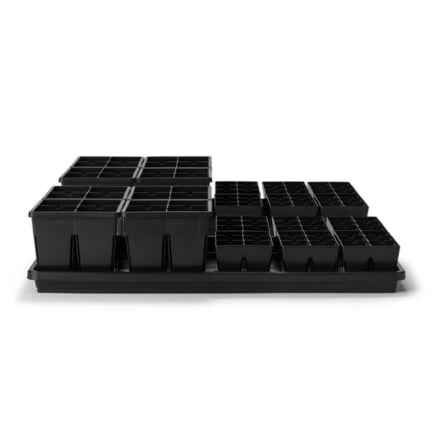
The Premium Seed Starting Kit
Espoma Bio-tone Starter

Espoma Bio-tone Starter Plus Plant Food
Garden Kneeler

Blue Fescue
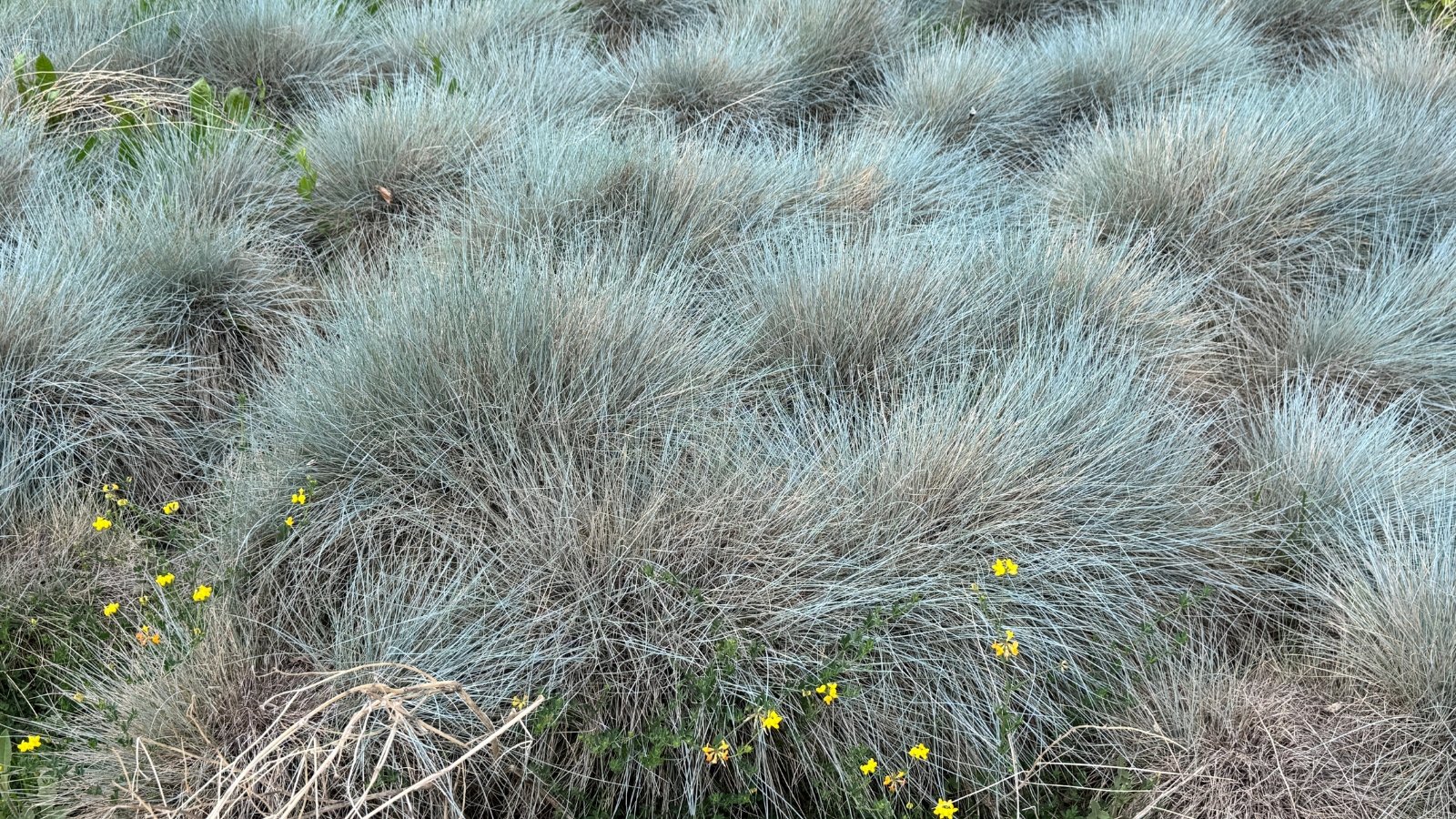 Blue tones fade with too much nitrogen.
Blue tones fade with too much nitrogen.Blue fescue is a smaller ornamental grass that stays green, or rather, blue, all year. It has striking bluish-gray foliage and a nice, rounded shape. This cool-season evergreen is attractive year-round in most climates. It has fine, needle-like blades that reach about 6 to 12 inches tall.
In early to mid-summer, blue fescue produces delicate flower spikes. They rise just slightly taller than the foliage and create a soft, airy texture. It thrives in full sun, but will tolerate partial shade. It prefers poor soil, and an overabundance of nitrogen will turn it more green than blue.
This grass prefers cool climates and may not do its best in hot, humid conditions. It’s easy to maintain by trimming dead blades in spring. Divide every few years to avoid center die-out.
Blue Oat Grass
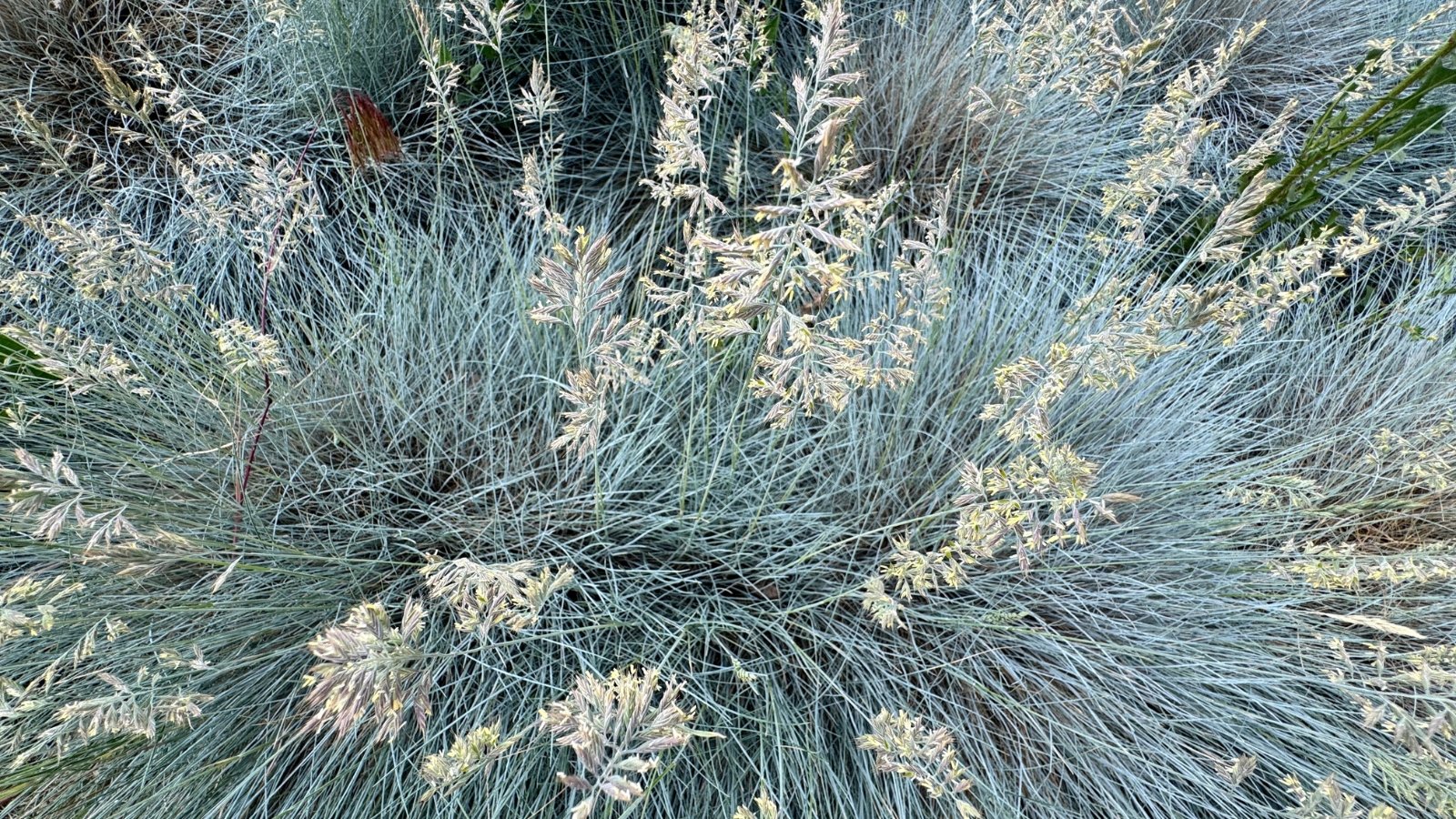 Elegant clumps sway with oat-like flower spikes.
Elegant clumps sway with oat-like flower spikes.Blue oat grass is a taller cultivar that stays bluish-green all year. It has an elegant, upright form and reaches two to five feet tall. It grows in neat, fountain-like clumps with flower spikes that rise about a foot taller than the foliage. They resemble tan oats and contribute extra texture to the garden.
The cool tones of blue oat grass complement other shades of green in the landscape. It thrives in well-drained, sandy, or gravelly soil and poor to moderately fertile conditions. Some organic matter will help to enhance its color. Comb out dead leaves in winter and divide your blue oat grass every few years to maintain vigorous plants.

Lilyturf
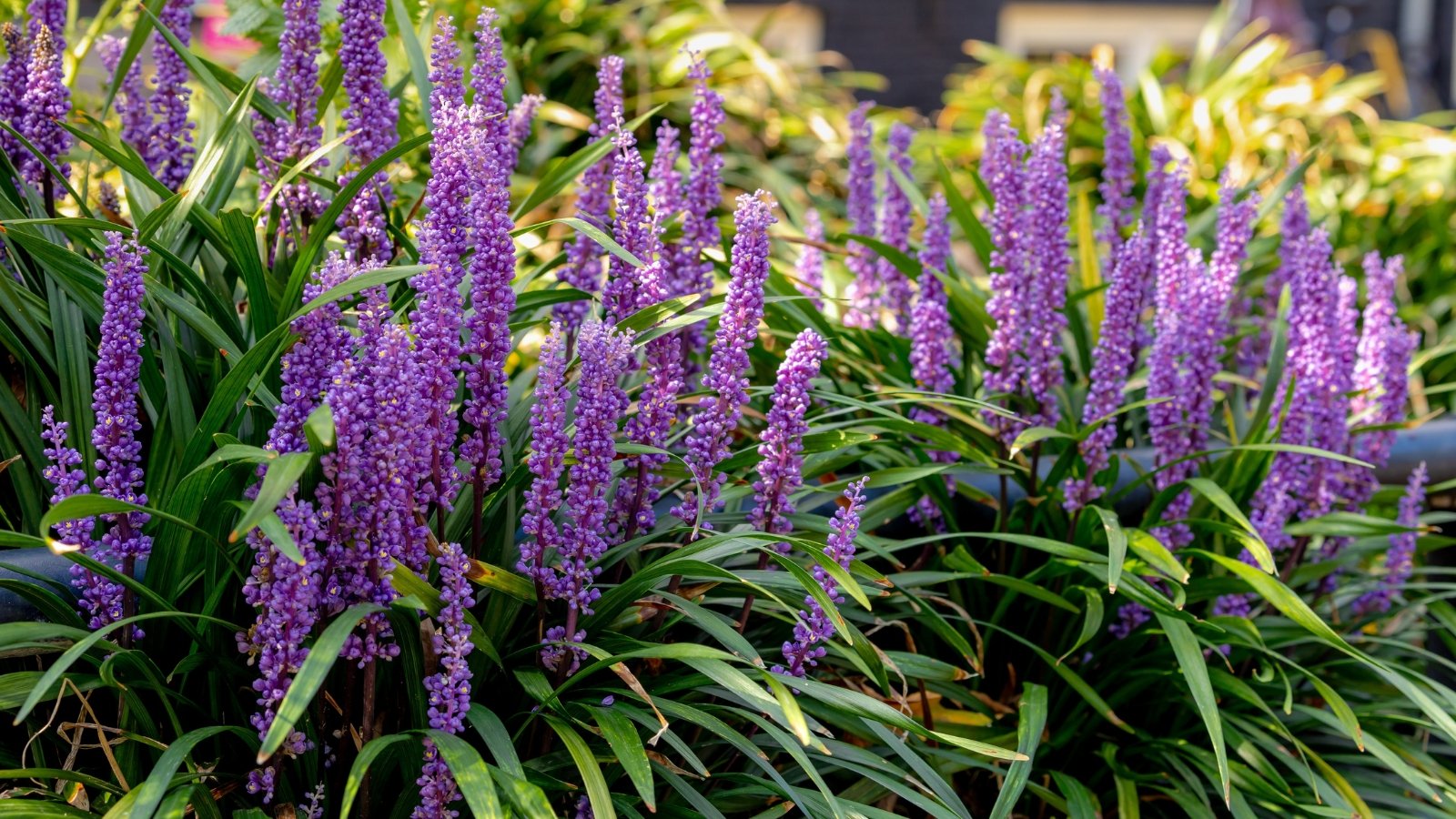 Drought-tolerant and low-maintenance, perfect for busy gardeners.
Drought-tolerant and low-maintenance, perfect for busy gardeners.Lilyturf is a hardy, semi-evergreen perennial grass that is often used as a ground cover or border plant. It’s not a true grass, but rather a member of the asparagus family.
There are two species most common in gardens: L. muscari, which is a clumping variety, and L. spicata, which is a spreading variety. The spreading type sends out runners and can cover large areas. Some species are invasive in certain areas, so be aware of this before planting them.
Lilyturf can be dark green or variegated with white stripes. In summer, it sends up tall spikes of purple flowers, and purple berries follow close behind. It’s incredibly versatile, growing in almost any light conditions. It’s also tolerant of different soil conditions as long as the drainage is sufficient.
Once established, lilyturf is incredibly low-maintenance and drought-tolerant. It requires little to no effort to maintain. You can cut the foliage back in early spring to give it renewed vigor in the coming year.
Mondo Grass
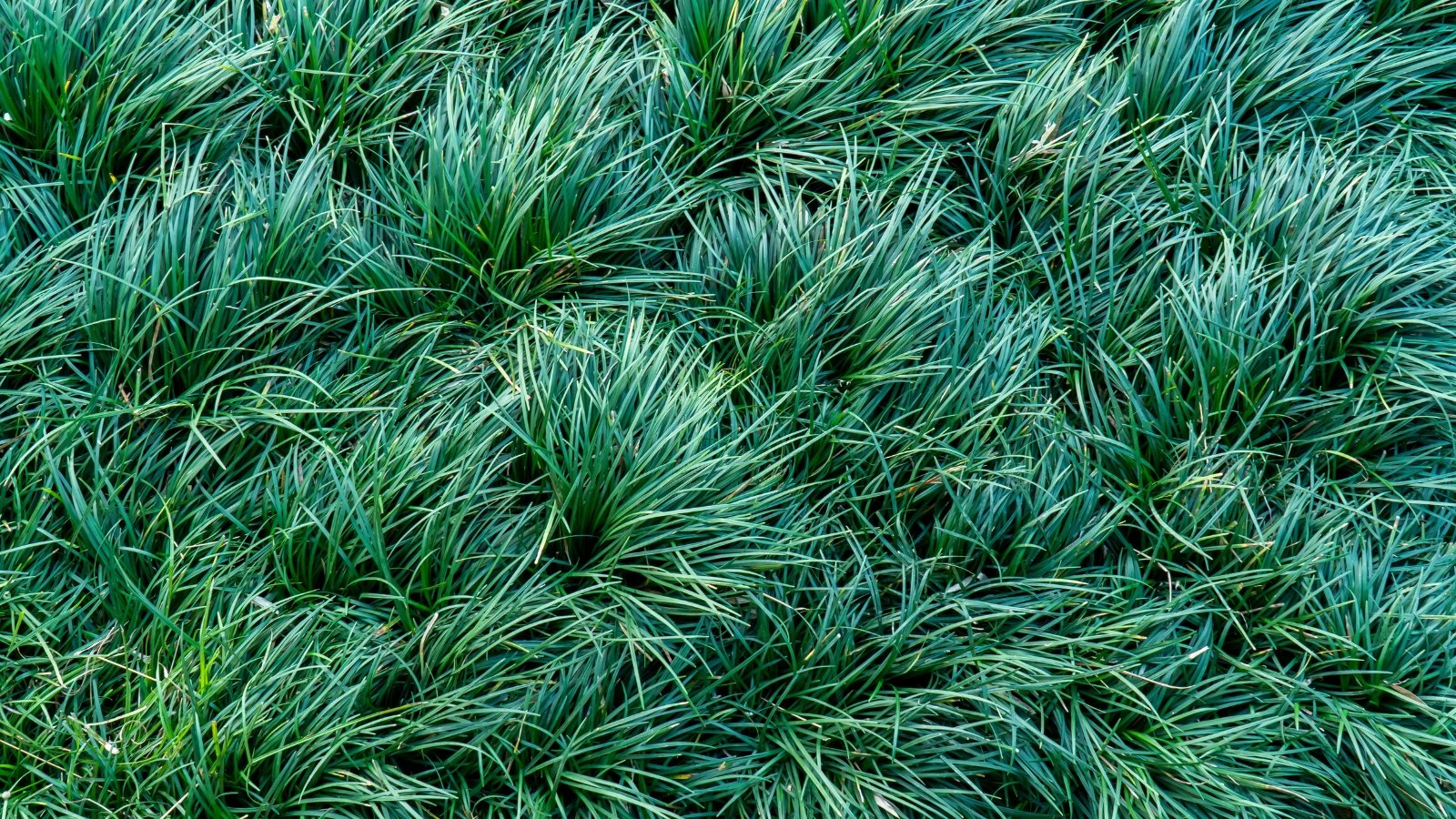 Tough and hardy, perfect for tricky shady areas.
Tough and hardy, perfect for tricky shady areas.When it comes to grass that stays green all year, mondo grass is excellent for partially and fully shaded spaces. From tiny dwarf varieties to those that grow up to a foot tall, mondo grass is tough and hardy. It’s also not a true grass, but a member of the asparagus family.
The dwarf variety of mondo grass is excellent for planting between stepping stones on a walkway. It stays quite short and provides a foundation of green through the winter, keeping walkways beautiful. There are also varieties that are black or deep purple. They all produce spikes of pretty, lavender flowers followed by blue berries in the fall.
Mondo grass prefers moist soil, but once established, it is drought-tolerant. In late winter, you can give it a trim to rejuvenate for the coming spring. It grows in clumps from slowly spreading rhizomes, creating a nice ground cover over time.
Tall Fescue
 Holds green color even in cooler weather zones.
Holds green color even in cooler weather zones.Tall fescue is a grass that actually remains green all year, rather than the cool tones of blue fescue. This true turf grass can serve as a ground cover, and looks nice if you mow it. You can also allow it to grow to its full height of two to three feet. It has deep green, medium blades and a clumping habit, so it stays neat and easy to control.
Fescues have deep root systems, and this one has roots that can reach two to three feet deep. This makes them exceptionally drought-tolerant. However, this grass does spread far and becomes unmanageable in many parts of the US. Check your region’s extension office to determine if it is invasive (there are few states where it isn’t).
Tall fescue stays green all year in most climates, and is semi-evergreen in the cooler reaches of its range. It’s tougher than most turf grasses and tolerates mowing excellently.
Sheep Fescue
 Dense clumps stand strong in rocky, poor soil.
Dense clumps stand strong in rocky, poor soil.Sheep fescue is one of the fine fescues. These are tolerant of poor soils and grow in dense, manageable clumps. The needle-like foliage stays green all year in most parts of its range. In late spring, it produces tall, slender flower stalks, but it is primarily ornamental for its foliage.
This tough grass is highly tolerant of drought, cold, and poor soil. It doesn’t mind rocky, sandy, and otherwise low-fertility soil types. It’s great for meadow landscapes and does an excellent job of combating erosion.
It’s not great for mowing, but if you’re looking for an attractive, tall grass that stays green all year, tall fescue is great!
Slough Sedge
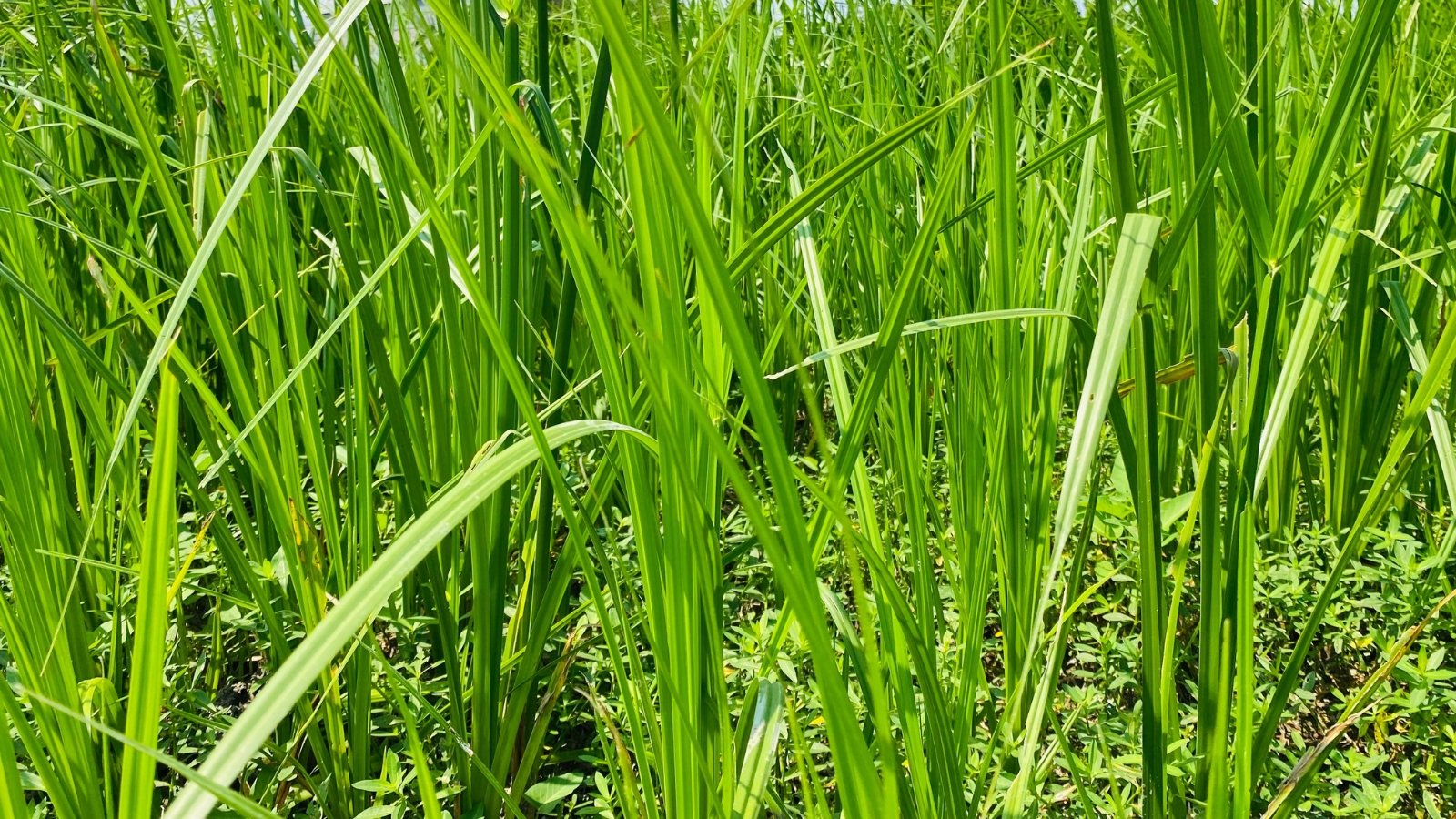 Thrives where standing water would stop other plants.
Thrives where standing water would stop other plants.Although it isn’t technically a grass, slough sedge is a larger sedge that stays green all year in mild climates. It’s native to the Pacific Northwest, and grows naturally in wetlands and near bodies of water. The foliage is bright, deep green, and grows in large, dense clumps. In late spring, it produces narrow flowering spikes that rise taller than the foliage.
This sedge is great for wet soil and spaces with poor drainage. It can even grow in standing water. The seed heads make good food for birds and other wildlife. Over time, it spreads to form dense colonies that help to suppress weeds and stabilize soil. It’s best used where naturalizing is fine, as it can be aggressive.
Soft Rush
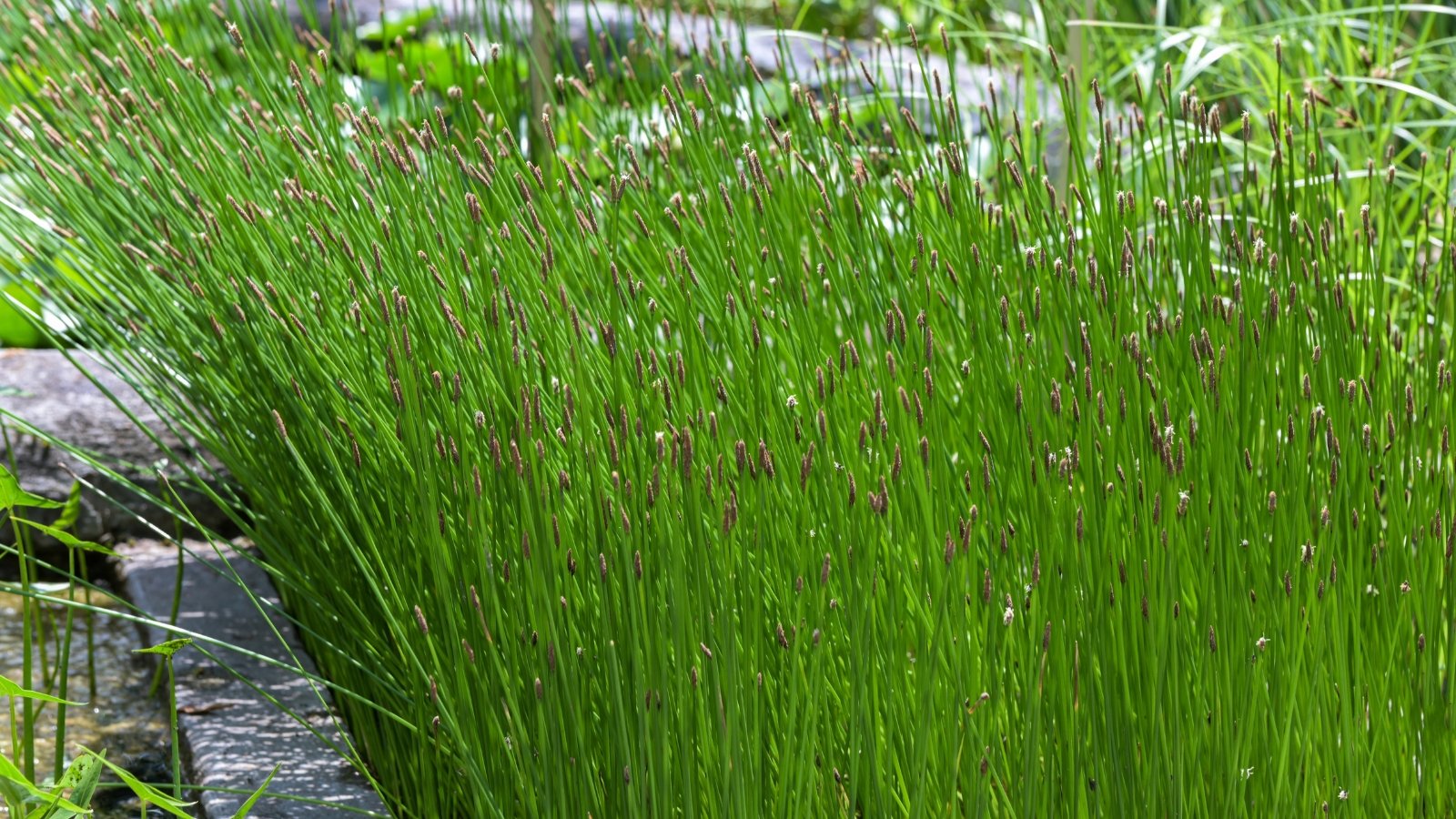 Late spring flowers attract birds and small insects.
Late spring flowers attract birds and small insects.Soft rush is a clumping perennial grass-like plant that also likes wet and boggy soil types. This is another species that works well in areas with poor drainage and around bodies of water. It has smooth, upright, cylindrical stems, rather than typical blades. It produces clusters of small greenish-brown flowers in late spring.
This unconventional plant is great for rain gardens, and it helps to prevent erosion in wet soils. It tolerates a wide range of soil types, as long as it maintains moisture. It creates a valuable habitat for many types of wildlife, including birds, aquatic insects, and amphibians.
Autumn Moor Grass
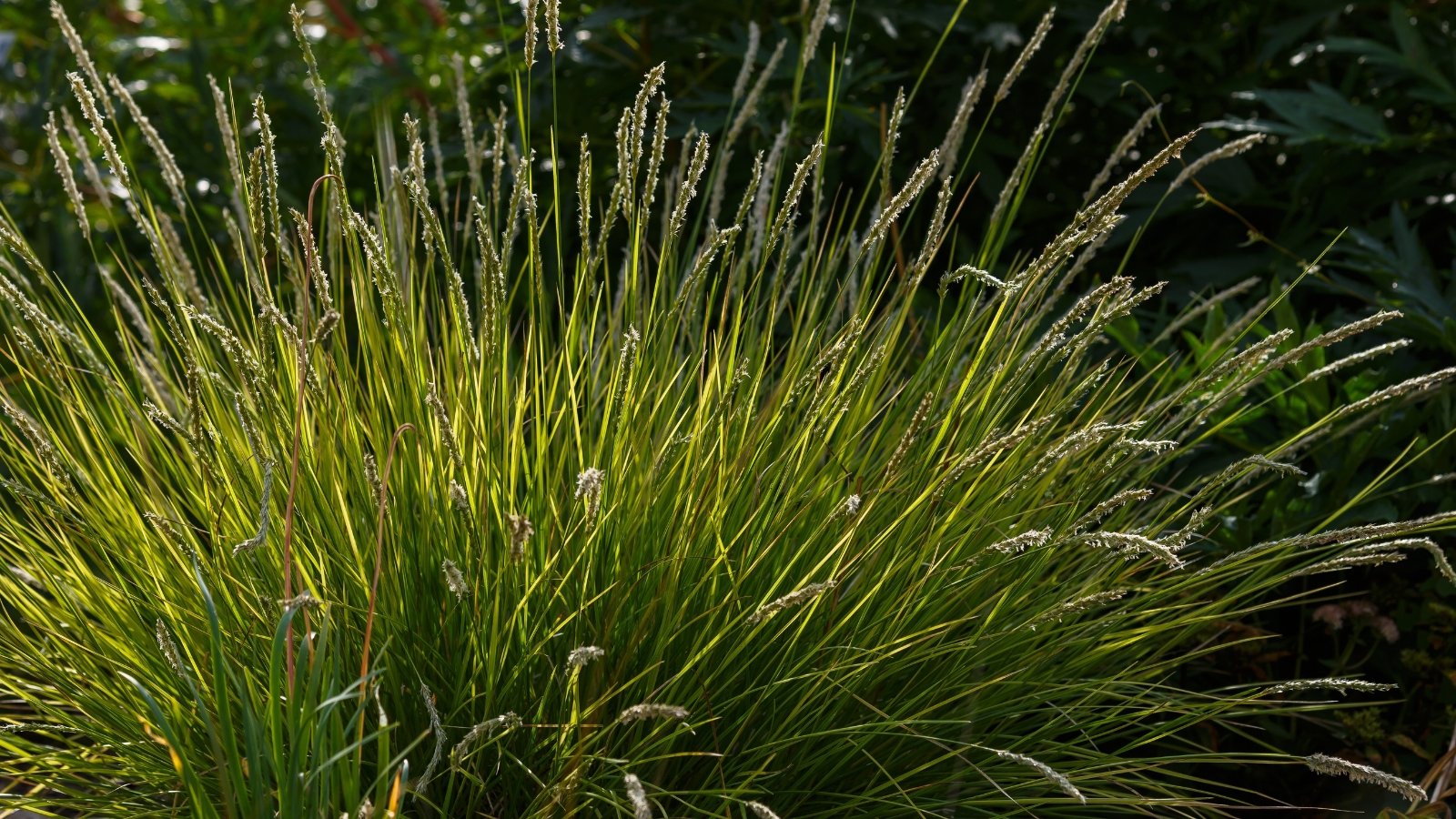 Green clumps brighten late summer garden spots.
Green clumps brighten late summer garden spots.Autumn moor grass is a smaller, clumping, ornamental grass. It has fresh, bright green foliage and blooms in late summer to early fall. It grows in dense mounds, up to 18 inches tall. The green tones last throughout the year, making this a great addition to the garden landscape.
Autumn moor grass needs proper drainage, but it tolerates clay and rocky soil types. Once established, it’s moderately drought-tolerant, requiring little maintenance. In late winter, you can cut back the foliage to tidy it up before spring brings fresh new growth.


 8 hours ago
3
8 hours ago
3

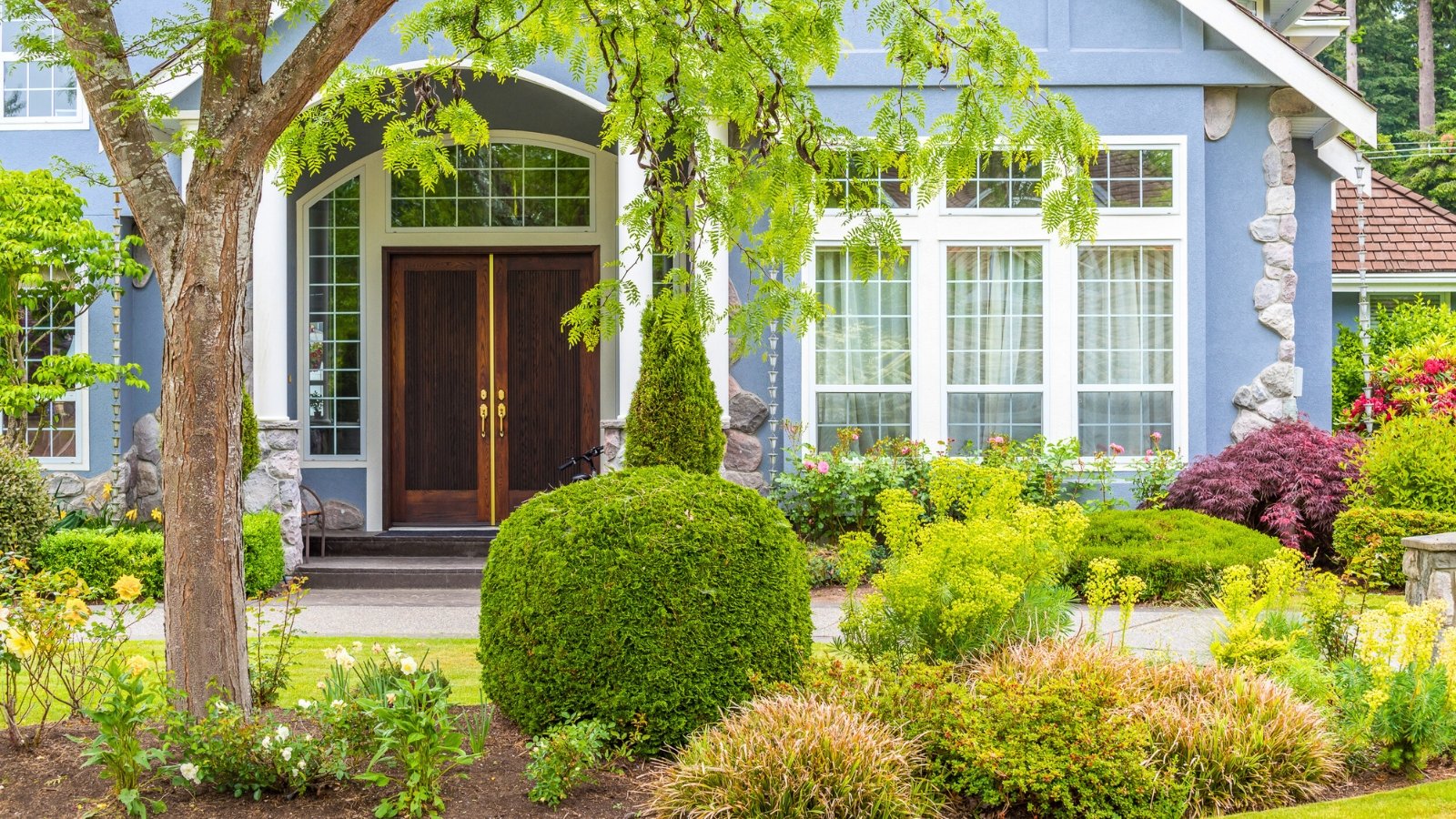
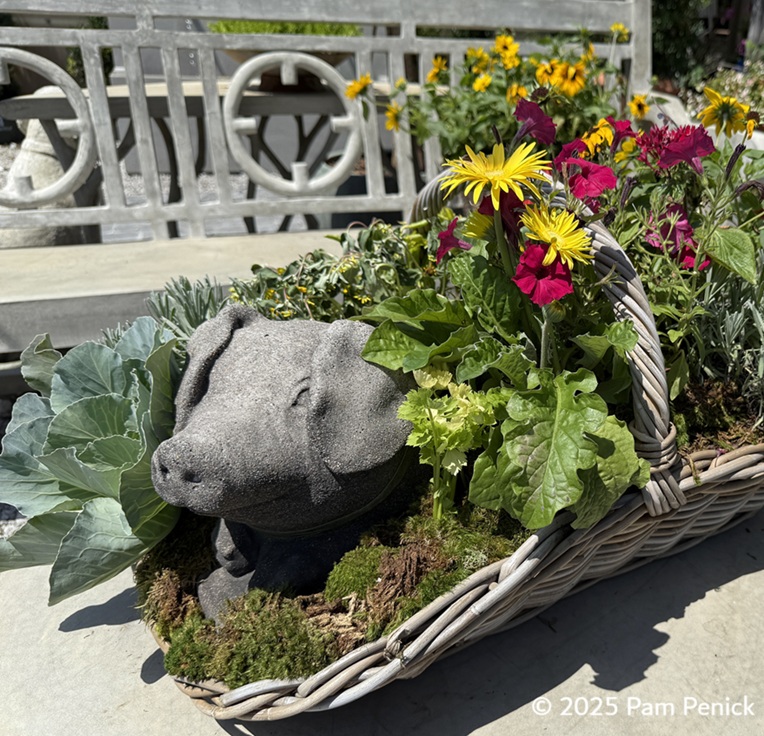


















 English (US) ·
English (US) ·  French (CA) ·
French (CA) ·